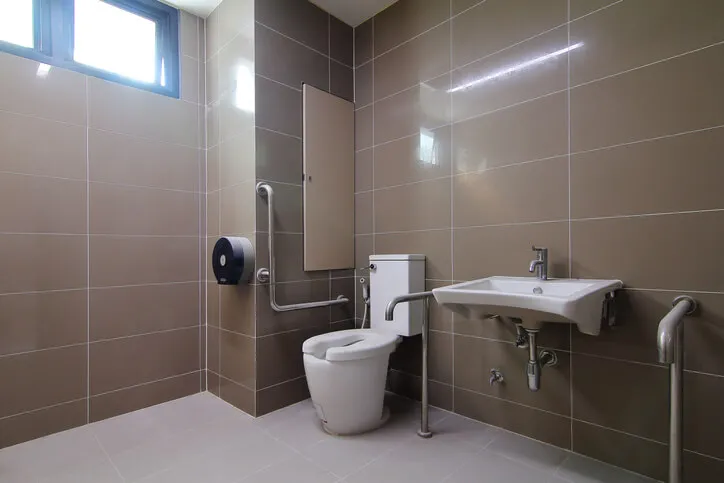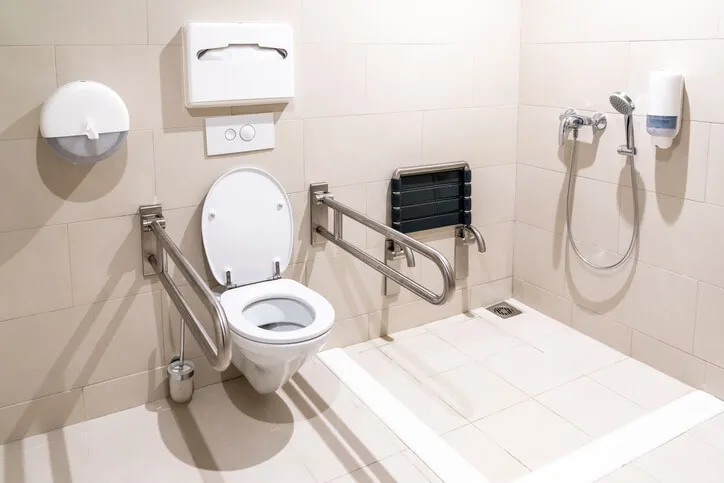It is a fact of life. With the passage of time we all get older and we need certain aids to carry out tasks that until recently we did without the slightest problem. If you are in charge of an elderly person, you know what we are talking about, and you probably also know the enormous importance of bathrooms adapted for the elderly, as this is one of the rooms that can present the most difficulties.
It may surprise you to know, but bathrooms adapted for the elderly are much more complex than we usually think. There are elements that we all identify as part of these spaces; however, there are many others that escape us, unless we are users or regularly share the bathroom with an elderly person.
What can’t be missing in bathrooms adapted for the elderly?
When this situation is approaching it is convenient to understand what are the most common needs of these users, so that we can fully facilitate the use of the service. Bathrooms adapted for the elderly should incorporate specific accessible elements for any activity that we perform in this room, otherwise it may appear that dependence that we want to avoid.
Supports and grips to prevent falls
Surely it is the first installation that comes to mind when we think of bathrooms adapted for the elderly and for any user who may need it. The supports and handles are something we see every day in public services for the disabled, but they are also essential in homes where elderly people live, as they can avoid many scares.
A toilet adapted for the elderly, more relevant than we think

The toilet is an element that we do not usually notice a priori when we try to facilitate the life of our elders. Surely, if we have not gone through this situation, we can not think of any differentiation we can make in this regard; however, it is enough to install a higher toilet to prevent the knees suffer when sitting.
In fact, it is also very useful as a seat for older people who have difficulty standing. By having a place to sit at the right height, they can do things like combing their hair, brushing their teeth or shaving without anyone else’s help, which is always a relief at certain ages.
Removing barriers: showers for people with mobility problems
The shower is probably the most difficult part of the bathroom for the elderly. In fact, in this case we go beyond their independence, prioritizing above all their safety and comfort. To achieve this, there are three elements that are indispensable, such as the screens, the faucet and the seat.
Screens, an element to be taken into account
Facilitating accessibility to the shower is essential for the safety of the elderly. To achieve this it is very important, on the one hand, that the shower tray is at the same level as the floor of the bathroom, without any step, and that the screens can be opened completely in case at some point it is necessary to access with a wheelchair.
An accessible faucet for the elderly
On the other hand, in order to maintain independence in times of hygiene, it is essential that the elderly have access to all the faucets, even when they are seated. There are faucets designed specifically for this purpose – in fact, some of them include handles – although in many cases it is sufficient to anchor them at a lower height than usual. A safe place to sit in the shower
A safe place to sit in the shower

Another element that we all remember when thinking about bathrooms adapted for the elderly is the shower seat. In this regard, it is common to see how a small stool is installed inside the shower tray, but it is advisable -unless the dependence is temporary- to always use a specific seat that is anchored to the floor or wall to avoid risks.
Mirror, a necessary element at all ages
Surely it had not crossed your mind that there were mirrors designed for adapted bathrooms. We know that this is a necessary tool in this room, but we take for granted that its regular installation will serve everyone. Nothing could be further from the truth, the tilting mirrors have been created precisely to be able to direct them to people who need to remain seated while they get ready.
An unobstructed washbasin, the best solution
It is very common to find sinks that are supported on furniture, since storage is usually as scarce as necessary in the bathrooms. However, if we talk about bathrooms adapted for the elderly, we must leave behind this option and install a suspended sink so that they can get as close as possible even in a wheelchair.
The importance of space in bathrooms for the elderly
Finally, if we pay attention to all these recommendations about the elements of bathrooms adapted for the elderly, we easily realize the need for space. Being able to access the toilet and maneuver is important, regardless of whether a wheelchair is needed, as it also reduces the risk of head impacts in case of falls.
Bathrooms for the elderly: Why renovate?
First of all, it is clear that the main objective of adapted toilets for the elderly is to facilitate their daily activities. A little empathy is enough to understand that no one is free to go through this stage and that we would all like to improve our conditions in these circumstances. However, this practice goes far beyond putting ourselves in their shoes.
The reform of bathrooms adapted for the elderly, either in their own home or in the home of their caregivers, is a clear boost to their independence in the day to day. It is never pleasant for anyone to become a dependent person, and such spaces are very useful to postpone the process and, incidentally, also facilitate the daily lives of family members.



